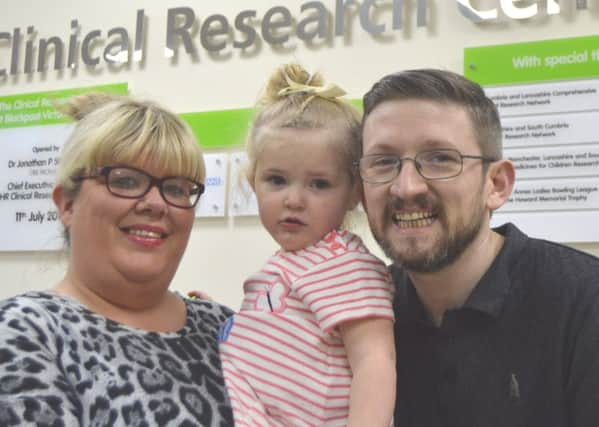Daisy-Mae helps with pioneering research


Her mum, Lesley, a heart failure nurse specialist, took part in a research trial, looking at visual perception of babies in the womb – carried out by the University of Cumbria ultrasound laboratory in Lancaster and Blackpool Victoria Hospital.
Discover Magazine, global publication for scientists, included the project in its list of top 100 discoveries last year. Led by developmental psychologist Professor Vincent Reid from Lancaster University, measuring the way the foetus responded using ultrasound, researchers found foetuses at 34 weeks are like new-born babies – preferring face-like stimuli.
Advertisement
Hide AdAdvertisement
Hide AdLight, in three dots – the shape of eyes and a mouth – was projected through the wall of the uterus for the unborn baby to see. Expectant mums could see their baby in the womb through 4D scan.
Lesley said: “It is great to hear being part of such a worthwhile project has been listed as one of the most important discoveries of last year. I don’t think Daisy-Mae will understand it yet, but it will be lovely for her to realise she was part of something like this when she grows up. To see your baby growing inside you in such detail is something truly wonderful. It was like we had met her, before she was even born.”
Dr Tim Donovan, associate professor in medical and sports science at the University of Cumbria, said: “This was fascinating work to be involved in and resulted in a significant level of interest in this country and around the world.”
Mr Johnson Amu, consultant obstetrician at The Vic, was the principal investigator for the study working alongside Jane Brooks, research midwife and Janet Keit, lead sonographer.
Advertisement
Hide AdAdvertisement
Hide Ad“This is an interesting and important study due to the potential benefit it offers. It provides expecting mums the opportunity to see their baby in the womb through 4D scan at no cost, while researchers learn how foetuses understand things before they are born – particularly looking at the relationship between early learning and environment.”